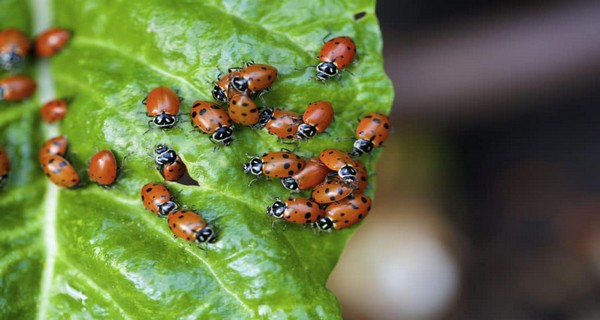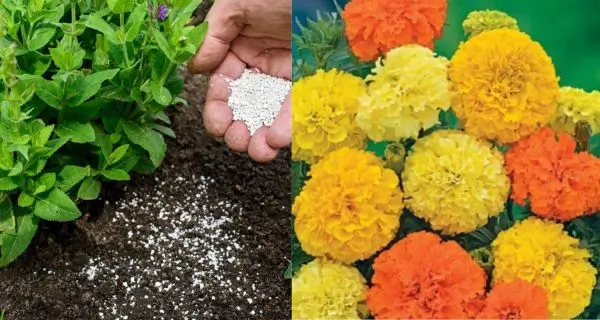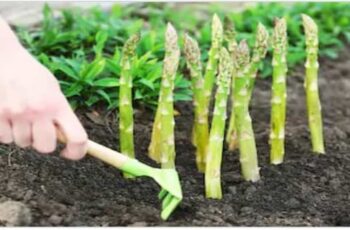Ad Blocker Detected
Our website is made possible by displaying online advertisements to our visitors. Please consider supporting us by disabling your ad blocker.
Ladybugs, or ladybirds as they are also known, are not only cute but also the number one beneficial insect in gardens. They play an important role in the biological control of aphids and other garden pests, making their presence a welcome sight and an obvious indicator of the garden’s organic status.
By welcoming ladybugs into your garden, you can effectively control pests without the use of chemical pesticides. Ladybugs are easily recognizable by their bright orange-red color and tiny black spots, although some lack spots and a few species are solid black or black with red spots.
Despite their common name, ladybugs are actually tiny beetles with chewing mouthparts, unlike true bugs such as aphids and bedbugs which have piercing and sucking tubes. When at rest, ladybugs tuck their thin wings under hard flaps called elytra.
How Ladybugs Help The Garden

How To Attract Hundreds Of Ladybugs To Your Garden & Keep Them There
Ladybugs are generally harmless, except for a few herbivorous species that can cause damage to crops like maize, spinach, and soybeans. They feed on small insects that infest garden plants, with aphids being their favorite meal. Aphids can stunt growth and affect fruit set by sucking the plant juices, especially from tender parts like the growing tips and developing buds.
Ladybugs are incredibly effective at controlling aphids, consuming 40-50 of them daily. A single adult can eat up to 5,000 insects and larvae in its lifetime, and each female can lay around 1,000 eggs per season. The eggs are laid in batches of 10s, 50s, or even 100s close to food sources.
Ladybug larvae, which hatch from the eggs, have an alligator-like appearance and feed on 400-500 aphids during the 2-3 weeks before pupating and emerging as young beetles in another week or two. Ladybugs and their larvae also prey on mealybugs, spider mites, and the eggs and larvae of larger insect pests like the Colorado potato beetle.
Ladybugs complete their entire life cycle in about 5 weeks or less, allowing them to give birth to 5-6 generations from spring to early summer. Depending on their species, they aestivate in summer and hibernate through winter, often gathering together in large numbers.
How To Attract Ladybugs To Your Garden
Ladybugs are a valuable asset to any garden due to their pest control potential. Although they can be found all over the country in small and large numbers, they will only stay in your garden if the conditions are suitable. Here are some measures that may help attract and encourage ladybugs to make your garden their home.
-
Avoid chemical spraying
While ladybug beetles are not significantly impacted by mild insecticides, they may prefer to stay away from sprayed areas. If you want to attract ladybugs to your garden, it’s best to avoid all chemical control measures, including herbicides and organic pesticides, for at least 5-6 weeks.
By doing so, you may find that ladybugs begin to appear in your garden on their own. This is particularly likely in the spring when they emerge from hibernation and are searching for new feeding grounds.
-
Plant some aphid-prone plants

Aphids are a common problem for roses, as well as for nasturtium and pot marigolds, two other ornamental plants. In the vegetable garden, cabbage, lettuce, radish, tomatoes, and potatoes are also prone to aphid infestations, as are fruit trees. To provide a ready source of food for ladybugs, consider planting some of these aphid-prone plants in your garden.
-
Plant suitable pollen and nectar plants
While ladybugs are primarily carnivorous, they also enjoy feeding on pollen and nectar, particularly during their growth phase. Flowers from the Umbelliferae plant family, such as dill, fennel, wild carrot, caraway, and cilantro, are particularly attractive to ladybugs. Additionally, ladybugs are often drawn to plants from the Aster family, such as tansy and yarrow, which have flat flower heads packed with tiny flowers full of pollen.
How To Buy & Release Ladybugs In The Garden
If you’re having trouble attracting local ladybugs to your garden or want to establish a population quickly, you can purchase ladybugs and release them into your garden. However, before bringing in ladybugs, it’s important to make sure your garden is insect-friendly, or the ladybugs may leave in search of better conditions.
While it is possible to breed ladybugs in bug farms, these often fail to follow natural feeding patterns when released into the garden. Ladybugs offered by bug dealers are usually collected in the wild, often from aestivation and hibernation sites where they congregate in large numbers.
When you receive the ladybugs, spray a little water into the bags and put them in the refrigerator to relieve dehydration and overexcitement caused by shipping. The cool environment helps them settle down as it gives a false sense of hibernation.
Ladybugs can be kept refrigerated for up to 3 months, although they may become so inactive that it appears they have perished. Some loss is to be expected, but most recover quickly when introduced into the garden.
To release the ladybugs, make sure there are a few aphid-infested plants in your garden. Watering down the plants and knocking down some aphids from their perch can help the ladybugs feed on the ground and appreciate the extra moisture.
Late evening or early dawn is the best time to release ladybugs to prevent them from flying away immediately. Sunlight prompts them to take flight, so releasing them in the evening gives them a whole night to settle down.

